Mala is the original Sanskrit word or Tibetan trengwa (TIBETAN) for prayer beads used during mantra recitation. Malas are ubiquitous in Buddhist communities all over the world, wrapped around wrists or dangling from fingers, accompanying mantra recitation. Tibetan Buddhist meditation and visualization practice can involve the repeating (mentally or out loud) certain mantras thousands or even hundreds of thousands of times, and so it is practical to use a mala to keep count. Even if you are not actively counting, the repeated recitation of the mantra while proceeding bead by bead through the mala serves to focus and calm the mind.
The most common type of mala is a string of 108 beads, made of precious or semi-precious stones, wood, seeds, or bone. Each time you work your way around the mala, saying a mantra for each bead, you are considered to have completed 100 mantra recitations. The extra 8 beads are “spare” to make up for any miscounts or mistakes you may make along the way.
The ‘guru bead” is often larger than others, and in some meditation practices symbolically represents one’s guru – but very practically, this bead is the starting point for the circuit, and is not counted among the 108 total. Some Malas will have some extra precious stones added at specific intervals, like after 27 beads for example, so that you know you are 1/4 of the way through one circuit. These counter beads are extra, so your total bead count would be 111 rather than 108.
There is also a smaller, wrist-sized mala, made of 27 beads for example, that is often used when doing prostrations. In this case, the smaller size is wrapped around your hand and repeated 4 times. One can make other configurations, of 21 or 22, for example.
To use your mala, start with the first bead next to the “guru” bead. Hold the bead between the index finger and thumb, and recite your mantra once out loud or silently. Then move on to the next bead with a rolling motion of your thumb, recite your mantra again and repeat. When you get to the guru bead again you have completed 100 mantras without needing to count each one At this point, its common to reverse direction by turning the mala around, and starting a new circuit of 100, going back the way they came. (Some people believe that if you continue in the same direction and cross over the guru bead, it is like stepping over your teacher.)
Although some sources recommend using the mala in your left hand, some Tibetans also hold them in the right hand. If you have a prayer wheel in one hand and a mala in the other, it is more common to hold your mala in the left hand and the prayer wheel in the right. and bell, ( (Tibetan: dorjeechupshay) These are 2 shorter strings of 10 small beads, attached to your mala. One of the strings has the dorje at the end, and the other the bell. Where these strings are placed on the mala is up to you. Theoretically, one keeps count of each circuit of 100 after which one bead on the dorje counter is moved forward. After 10 circuits of the mala, you will have moved all 10 beads on your dorje counter, and you will have recited 1000 mantras. At this point, you will move one counter forward on the bell counter, to symbolize 1000 mantras counted. Then you begin again with a new circuit on your mala, and once you have made a new circuit, you move one of the dorje counter beads forward, and continue like this. With a dorje and bell counter, you can count up to 10,000 mantra recitations.
If you need to count more than that, you can use anything that you wish. When counting 100,000, you can use stones to mark each 10,000 (making a pile of stones in which each one represents 10,000), or you can make a note on a piece of paper. The basic idea at this point is that you can use whatever is practical, and not get too concerned about any ritualistic rules or object.
There are many ways of reciting mantras. One is vocally and one is mentally. So that is actually listed in the ways of how to recite mantras. And there’s ways of reciting mantras in which you actually visualize the letters and recite it mentally that way, or imagine that the letters themselves are giving off the sound. And so on one level, working out loud with mantras is at least turning speech to something positive, because we integrate: the body in a certain position, imagining that we are a certain deity; reciting a mantra; and keeping in mind either compassion, clarity of mind, or whatever is the representation there.
On a deeper level, then, the mantra is involved with the breath and involved with the energy. The energy and the breath of the body are very closely related from a Buddhist analytical point of view. And so a mantra gives a regular rhythm to the breath and to the energy which, in terms of brain waves or whatever, has a certain benefit. So if we are just working on that level of establishing a more steady rhythm to the energy, whether you do it out loud or mentally, I think would have a similar effect. But then I am just speaking from my own impression, but it would certainly equally, I think, equally calm you down, for example, or make your mind a little bit more sharp.
But the deepest level of mantra has to do with shaping the energies of the breath. You shape the breath with the mantra, and that shapes the energy, which allows you a method for gaining control over the winds and the energies of the body so that you can bring them into the central channel. So what you want to do is, in a sense, shape the breath. And it’s done with a special type of mantra, a special type of practice – very, very advanced – for getting the winds in the central channel, so you get to the clear light mind more easily which is the most conducive for understanding voidness, etc.
So, on one level, what helps to shape the breath is at least vocalizing to a certain extent but, you know, it doesn’t have to be really loud. Of course there are many styles of recitation of mantras: and there’s loud, and there’s soft, and there’s singing, and there’s all these other things. But ultimately, on the deepest level, what is really only required is a shaping of the breath. So that, you can do even in a whisper. In a sense it’s just shaping the breath. Nobody else has to hear it.
So most of the time when you do mantras, what is recommended is that your mouth moves in the shape of the mantra and there is a little bit of vocalization, but really only you can hear it, so it is not disturbing everyone around. So it doesn’t mean, in short, that just reciting it mentally is useless or less powerful, it is just different.


